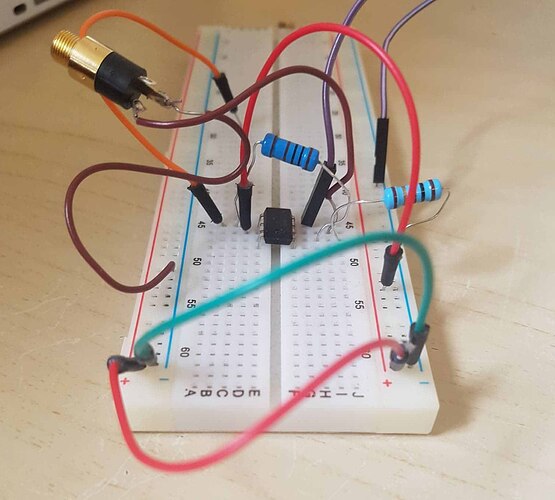Hi all,
I want to make an audio processing device using a Teensy and I want to run an analog signal into it. My background is in audio programming, so electronic circuits are new to me. I realise audio is an AC signal and the Teensy only accepts 0-5V signals. So my current exercise is to use a DC offset circuit to shift my AC signal into the 0-5V range.
Currently I am using a line-out from my phone using a mono 1/8 inch jack. As the signal from my phone is weak (200 mV) have to amplify the analogue signal from my phone using the LM386. The circuit I used was a non-inverting amplifier (Figure 1). Resistor values I used were 1k for R2, and 10 Ohm for R1 (figures 3, 4, 5).
This works - I go from 180 mV to 2.5 Volts. In reality my signal fluctuates from 180 mV to 310 mV, and once amplified it fluctuates between 2.4 and 3.15 Volts. Is this to be expected, and is this acceptable to work with?
The next step is to do the DC offset which I am struggling to understand. I have read that a summing amplifier circuit can be used to add a DC signal to my AC signal to achieve the DC offset (Figure 2). Is this correct?
Does the extra DC voltage have to come from a separate voltage source? (i.e. not the battery that powers my op-amp)
If so, why, and what should I use as my voltage source?
Thank you for your time ![]()




